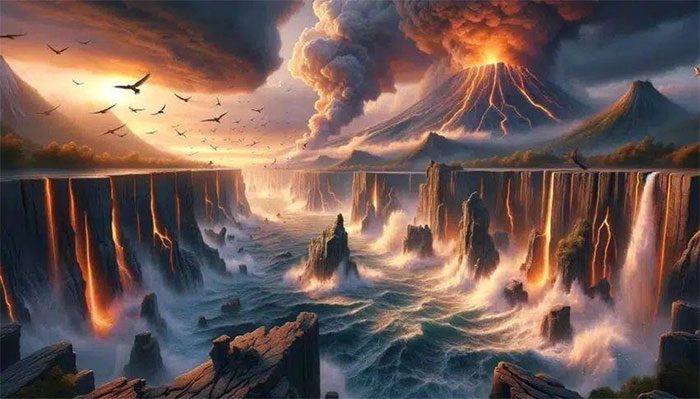Geologists Reveal the Mystery of the Lost Continent Argoland, Which Disappeared Hundreds of Millions of Years Ago. Its “Remnants” Now Scatter Across Southeast Asia.
This new discovery sheds light on the tectonic dynamics of continents, helping us understand the geological impacts of the past on biodiversity and climate.
Understanding our planet and its complex geological history is crucial for deciphering Earth’s evolutionary stages.
Recently, two geologists, Eldert Advokaat and Douwe van Hinsbergen, in collaboration with Utrecht University (Netherlands), made a breakthrough in unraveling the mystery of Argoland, a “lost” continent that has been missing for 155 million years.
In the past, Argoland was connected to Western Australia, but it later fragmented into several pieces, with remnants of the continent found scattered throughout Southeast Asia.

The continent Argoland fragmented and drifted in the ocean after separating from Western Australia. (Illustration: Trust my science).
This significant discovery provides a new perspective on past tectonic movements and their consequences for biodiversity and the climate of our planet.
155 million years ago, a land mass stretching 5,000 kilometers detached from Western Australia and drifted across the ocean. This was not a simple geological slip. Tectonic forces literally stretched and pushed Argoland away from its original position.
Analyzing the seabed structure, scientists indicated that this continent must have drifted northwest toward the islands of Southeast Asia.
However, there is no large landmass hidden beneath these islands; only remnants of smaller continental fragments surrounded by ocean basins. In comparison, although India also separated from the supercontinent Gondwana, it did not experience the intense fragmentation seen with Argoland.
To understand what happened to Argoland, geologists identified a vast underwater gap known as the Abyssal Plain Argo, a key clue to the past presence of this mysterious continent.
The Journey to Find Argoland
Initial data regarding the continent Argoland prompted scientists to search for this mystery in Southeast Asia.
Geologist Eldert Advokaat and his team from Utrecht University conducted geological expeditions primarily in Indonesia and Myanmar.
They found fragments that were once part of a vast continent. These pieces are scattered and hidden under lush vegetation, posing a significant challenge: How do you reconstruct a continent from these scattered pieces?
The research team dedicated seven arduous years to this task. Each fragment discovered represented an additional puzzle piece but also brought new challenges.
Unlike other continents that split into larger segments, Argoland fragmented into many smaller pieces. This fragmentation is characteristic of a microcontinent.
There has never been a clearly defined and coherent boundary for the continent Argoland; rather, it is an “Argopelago” of microcontinental fragments separated by older ocean basins. Douwe van Hinsbergen stated: “The fragmentation of Argoland began 300 million years ago.”
The puzzle has been completely solved in alignment with the geological systems of the neighboring Himalayas and the Philippines. This study also explains why Argoland was so fragmented: the fragmentation may have accelerated around 215 million years ago when this continent broke into thin pieces.
Geologists also conducted field studies on several islands, including Sumatra, the Andaman Islands, Borneo, Sulawesi, and Timor, to test their models and determine the age of the main rock layers.
Significance of the Discovery
According to Eldert Advokaat, the trajectory and fragmentation of Argoland may provide valuable clues about the climatic conditions of the region when this continent still existed.
Tectonic movements affect ocean currents, atmospheric circulation, and consequently influence the climate. Hinsbergen emphasizes the importance of this rediscovery for the global understanding of plate tectonics.
Moreover, it offers insights into how continents form, move, and ultimately disappear, as well as how these processes impact biodiversity and ecosystem development.


















































